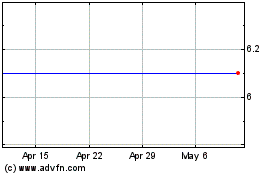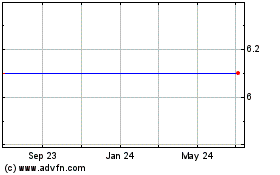Santander: No Margin for Error -- Heard on the Street
January 27 2016 - 8:18AM
Dow Jones News
By Paul J. Davies
Two of Banco Santander's biggest markets are giving it a
headache, but for very different reasons.
At home in Spain, bad loan losses are falling fast, but ultralow
interest rates are crushing lending margins and have left the bank
with very limited pricing power. In Brazil, it is the other way
round.
Santander must tackle its problems because its capital cushion,
which remains thin, leaves no room for error.
The bank did manage to finish 2015 with a small rise in net
profits over 2014, it reported Wednesday. However its equity raise
at the start of last year means earnings per share fell 7%,
disappointing investors.
In Brazil, recession, unemployment and high inflation are taking
a toll. Santander's bad loan provisions there rose in the final
quarter, pushing charges for the year to EUR3.3 billion ($3.58
billion). That was 5% worse than 2014 in local currency terms, but
the collapse in the Brazilian real meant the charges were about 10%
lower in euros.
When looking at these charges relative to total loans--known as
the cost of credit--Santander finished 2015 still in a better
position than a year earlier and below the 5% level it said it
wouldn't breach at last year's investor day.
Santander has managed to hold down this cost of credit in Brazil
by making fewer riskier loans and more higher-quality ones in the
past couple of years. High interest rates also allow it to bake in
more profit on good loans. However, as more people lose jobs,
problem loans will inevitably grow and the bank now thinks its cost
of credit will go back above 5% over the next couple of years,
hurting profits.
In Spain meanwhile, the problem is ever-shrinking lending
margins. To tackle this, the bank aims to earn more money in fees
from selling its clients more products and services. It has plans
in place to do this in Spain as well as in markets like the U.K.
(where it recently hiked retail account fees by 150%).
But the early signs aren't great. Net fee income in Spain fell
almost 6% in 2015, worse than the fall in net interest income.
Across the group, Santander says it can add 0.1 percentage
points to its common equity tier one capital ratio each quarter. It
finished 2015 at 10.05% and expects to need more than 10.5% by the
start of 2019.
If all goes to plan, it should have more than 11%, but that
entails no nasty surprises from Brazil. Amazingly, it is also still
entertaining the possibility of acquisitions if something like the
small bank being spun out of Royal Bank of Scotland in the U.K. can
be had cheaply enough.
Santander needs to be careful. It is walking a very fine
line.
Write to Paul J. Davies at paul.davies@wsj.com
(END) Dow Jones Newswires
January 27, 2016 08:03 ET (13:03 GMT)
Copyright (c) 2016 Dow Jones & Company, Inc.
Banco Santander (NYSE:STD)
Historical Stock Chart
From Mar 2024 to Apr 2024

Banco Santander (NYSE:STD)
Historical Stock Chart
From Apr 2023 to Apr 2024
